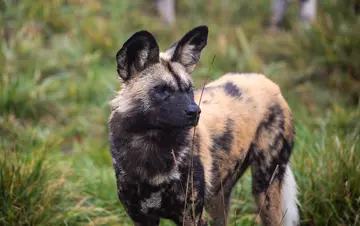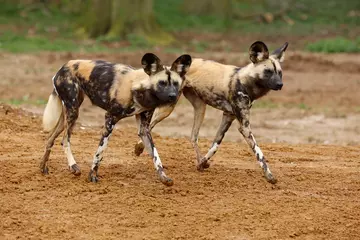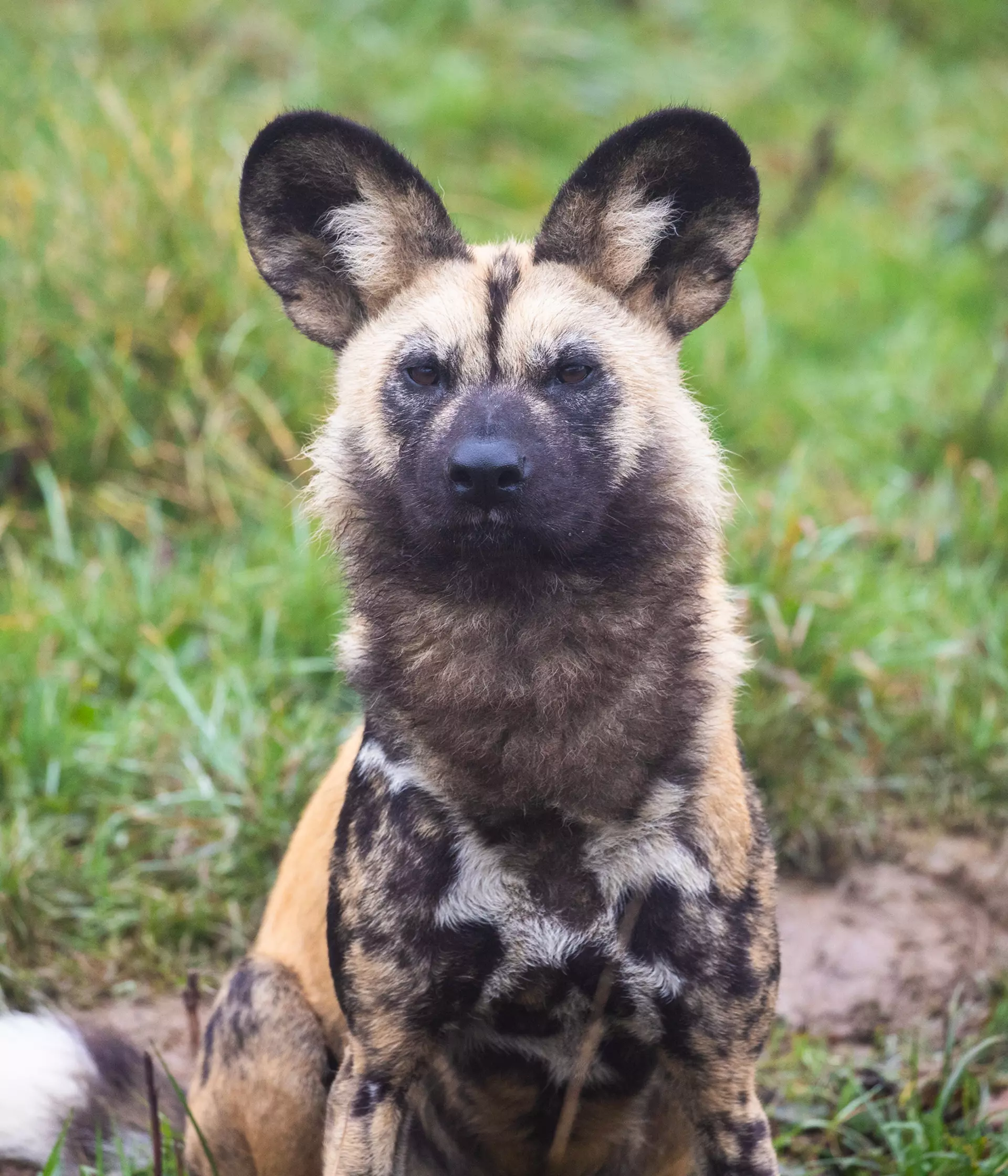
African wild dog facts
African wild dogs can also be called African hunting dogs or painted dogs.

What do African wild dogs look like?
African wild dogs have defining features, such as large, rounded ears and a beautiful mottled coat. Each dog has its own unique patterns and markings. No two are the same.
What do African wild dogs eat?
African wild dogs typically eat antelope and wildebeest but also warthogs, zebra and even lizards.
Do African wild dogs live in groups?
Renowned for their social nature, African wild dogs can live in tight-knit units of up to 25 individuals; an attribute that is key to them being one of the most successful predators in the world, boasting a remarkable ‘kill rate’ per hunt of up to 70% compared to an estimated 20% for a pride of lions. They're one of the world's most highly social species, hunting, resting, and raising their young as a team.

What threats do African wild dogs face?
Unfortunately, such formidable predatory success is no guarantee of survival though; African wild dogs are classified as Endangered on IUCN’s Red List of Threatened Species. Due to threats such as habitat fragmentation and human conflict, their wild populations are in decline.
As an international conservation charity, ZSL works in Kenya and across Africa to protect the species and alleviate human-wildlife conflict to help wild dogs and people to share the same landscapes.
Learn more about ZSL's conservation work
